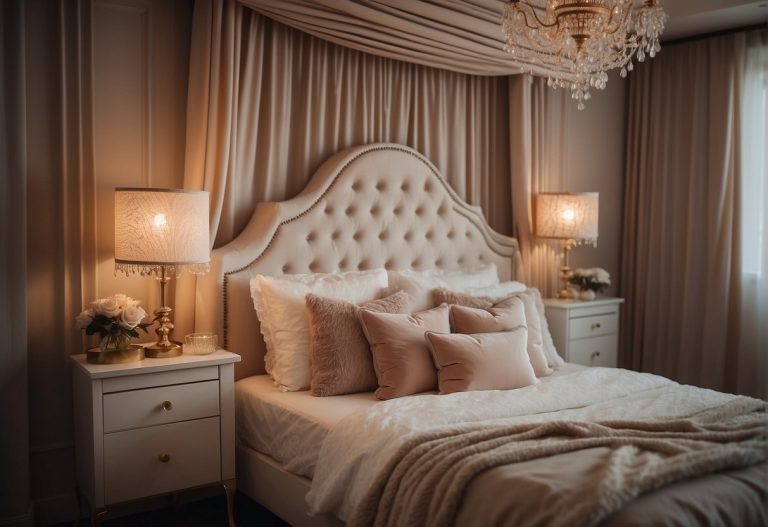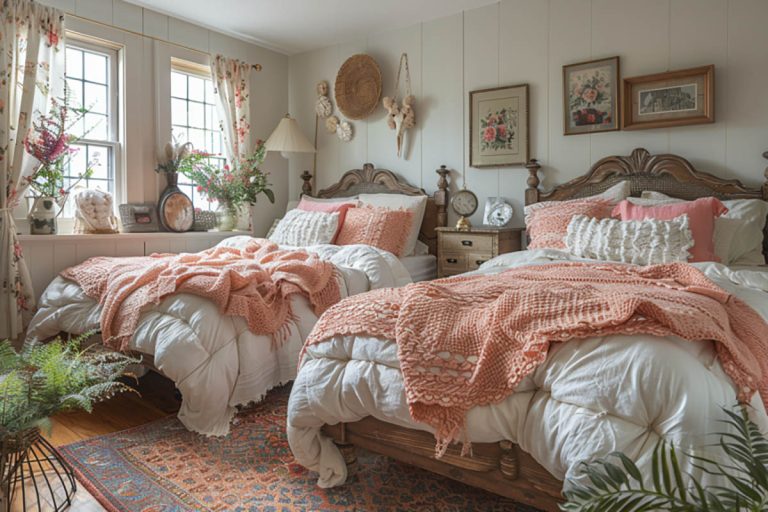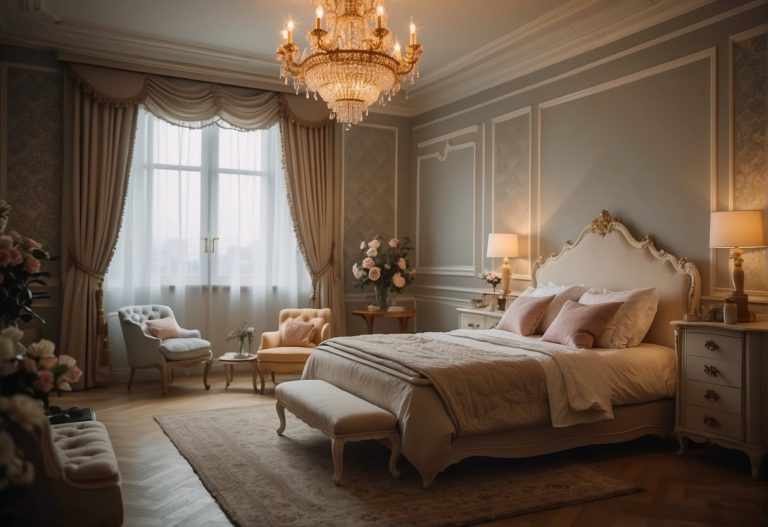Spanish Bedroom Design: Embracing Elegance and Comfort in Decor

The Spanish bedroom style is distinct, featuring a combination of traditional architectural elements, rich materials, and warm, earthy tones. These components work together to create a space that is both rustic and elegant.
Architectural Features
In Spanish bedroom design, architectural elements play a significant role in setting the theme. Exposed wooden beams are often seen overhead, which can vary in treatment from roughly hewn to elegantly carved, depending on the region’s influence. Vaulted ceilings are another common feature, adding a sense of grandeur and space. Walls are typically finished with stucco, a nod to Spanish and Mediterranean architecture, providing a textured backdrop that complements the woodwork.
Furniture and Materials
Furniture in a Spanish-style bedroom often includes wrought iron details, used in bed frames, chandeliers, and sconces to add a historic and artisanal touch. The materials favored in this style include hardwood floors, which offer warmth and durability. Additionally, terracotta tiles can be incorporated to bring in traditional Spanish elements. The textural contrast between the tiles, the wood beams, and the plush fabrics adds layering and depth to the room.
Color and Texture
The palette of a Spanish bedroom is inspired by earth tones that reflect the natural landscape. Warm hues such as terracotta, deep reds, and saffron are hallmark colors, infusing warmth into the space. Textures are equally important; patterned textiles may be used in bedding, rugs, or tapestries to add color and visual interest. This combination of color and texture works together to create an inviting, comfortable bedroom retreat reflective of Spanish Colonial design heritage.
Decorative Accents

In Spanish bedroom design, decorative accents are essential in capturing the essence of the style. They turn an ordinary room into an authentic Spanish retreat by focusing on rich textures, intricate patterns, and a blend of both historic and modern elements.
Lighting and Metalwork
The use of chandeliers is common in Spanish-style bedrooms, providing not just light, but also an element of sophisticated craftsmanship. Typically, these lighting fixtures are made of wrought iron details, which add to the rustic yet elegant charm of the room. Mirrors with metalwork on their frames can further enhance the room’s brightness while adding to the decorative flair.
Textiles and Artwork
Textures play a critical role in Spanish bedrooms, with rugs and bedding introducing warmth and color. Homeowners often choose bedding with patterns that reflect traditional Spanish motifs. Art prints and other wall decorations may depict scenes from Spanish culture or patterns that complement the room’s color palette. These textiles and artworks are not just additions but are central to the theme of the space, bringing together the decorative accents of a Spanish-style bedroom.
Functional Aspects of Design

In Spanish bedroom design, the practicality of the space is given due consideration along with aesthetic appeal. Storage and lighting are cleverly integrated to ensure functionality without compromising on the distinctive character of the style.
Storage and Organization
Spanish bedrooms typically incorporate ample storage facilities with an eye towards organization and practical use. Built-in wardrobes or armarios are common, often featuring detailed woodwork that adds to the room’s elegance. Side tables serve the dual purpose of providing surface space and additional storage, frequently including drawers or shelves beneath. The furniture is designed to optimize the room’s square footage while allowing for movement and maintaining a clutter-free environment.
Windows and Natural Light
Good lighting is essential, and Spanish design emphasizes letting in an abundance of natural light through large windows. These windows are not just functional elements but architectural features often characterized by their arched design and wooden shutters. Bright colors are often used for window dressings, complementing the typically white or neutral walls, to create an atmosphere that both captures and amplifies light. In rooms where privacy is needed without blocking the light, such as bedroom furniture areas or sitting rooms adjoining bedrooms, sheer fabrics may be employed to maintain brightness while offering seclusion.
Color Palette and Themes
The color palette and themes in a Spanish-style bedroom revolve around a harmonious blend of warm, earthy tones and vibrant, bright colors. This section delves into the specifics of these color choices and how they correspond with furniture and decor.

Earthy and Bright Tones
Spanish-style bedrooms often incorporate a range of Neutral Colors such as beiges and browns, which serve as a foundation for the design. Earthy Colors play a significant role, with shades like terracotta and deep reds creating a cozy and inviting atmosphere. These are complemented by Bright Colors—for instance, pops of fuchsia and golden yellow can add vibrancy and life to the room. The contrast between Modern and Earthy elements is a distinctive characteristic of Spanish design, balancing contemporary flair with traditional warmth.
- Neutral Colors: Beige, Cream, Espresso
- Earthy Colors: Terracotta, Umber, Rust
- Bright Colors: Fuchsia, Golden Yellow
Matching Furniture and Decor
Furniture in a Spanish bedroom should harmonize with the color scheme. For example, Espresso-colored wood furniture accents neutral walls beautifully, grounding the space with its rich color. Incorporating Rich Colors in textiles—such as in curtains, rugs, and bedding—provides cohesion between the furniture and the room’s vivid palette. Strategic Pops of Color, perhaps through decorative pillows or artwork, can infuse modern zest into the space while respecting its earthy roots.
- Furniture: Wood in Espresso, Dark Brown
- Textiles: Curtains, Rugs, Bedding in Rich Colors
- Decor: Artwork and Accessories featuring Pops of Color




